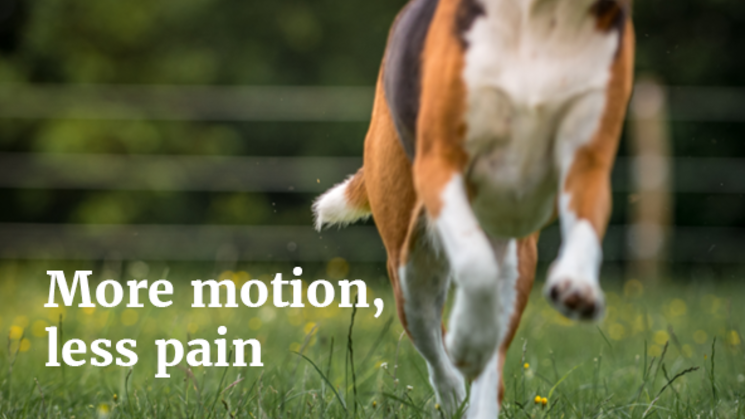iMotion Canine

Worldwide, millions of people and animals suffer from painful musculoskeletal disorders such as back pain or joint pain. The cause is often joint wear or aging of the intervertebral disc. Unfortunately, there is often no effective treatment available yet, resulting in much suffering, pain and reduced well-being. In animals, such conditions are often the reason for premature euthanasia.
By objectively assessing the movement of animals using sensors, it is possible to detect musculoskeletal disorders more early and more accurately and to initiate a specific treatment pathway more quickly. In human medicine, this type of motion analysis is already widely and successfully used. Also in the horse sector, motion analysis using sensors has been successfully used for several years for more accurate lameness research.
Canine motion analysis
At the same time, there is a great need among both dog owners and veterinarians to be able to properly determine whether a dog is lame or not. Indeed, orthopedic examination and diagnosis of lameness can be quite difficult, even for a veterinarian. Especially if it is not part of daily practice. The same is true for owners. Although they know their own dog best, it can be difficult to recognize changes in movement patterns. Lameness often develops gradually and a dog often starts to compensate. Finally, owners are not always sure what to look for or what to look for.
However, in the dog the application of the usual method of movement analysis is a lot more challenging; a large number of different breeds means that a uniform model of analysis is not sufficient. In addition, the current method of motion analysis works by applying sensors to the skin, or coat. Dogs typically have longer fur, which makes applying sensors and making a reliable measurement many times more difficult.
A new way of analysing movement in dogs
With this pilot project, the veterinary researchers at the Faculty of Veterinary Medicine want to develop a new way to make movement analysis possible in the veterinary practice and the home situation of the dog.
As a first step, a system will be developed that allows a video of the dog to be made with regular cameras. Then, based on computer vision and deep learning, an algorithm will be developed that can recognize lameness. The current "gold standard setup" with motion capture cameras will be used to validate the new system.
In the future, we would like to apply the developed algorithm in an app, available for veterinarians and owners. For the veterinarian, such a system can soon serve as an additional confirmation of a previously made diagnosis. For the owner it can be an important incentive to go to the veterinarian in time for a diagnosis and treatment.
Help us today to improve the welfare of dogs everywhere!

















